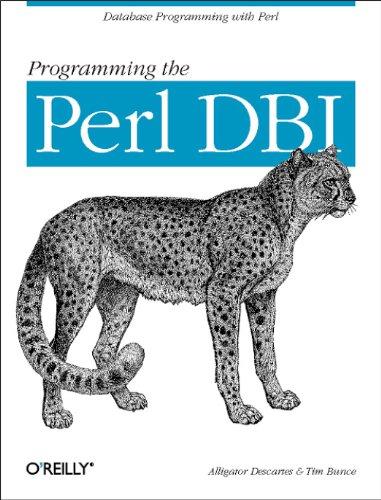Question
UML class diagram of this program CompilerGUI.java import javax.swing.*; import javax.swing.border.*; import java.awt.*; import java.awt.event.*; import java.io.*; import java.util.*; /** * Purpose: Creates a GUI
UML class diagram of this program
CompilerGUI.java
import javax.swing.*; import javax.swing.border.*; import java.awt.*; import java.awt.event.*; import java.io.*; import java.util.*;
/** * Purpose: Creates a GUI for testing the CompilerGraph and related classes. */ public class CompilerGUI extends JFrame { private static final int TEXT_FIELD_WIDTH = 7; CompilerGraph graph; boolean initialized = false; public CompilerGUI() { super("Class Dependency Graph"); setLocationRelativeTo(null); setDefaultCloseOperation(JFrame.EXIT_ON_CLOSE); setLayout(new BorderLayout(5, 10)); //Initialize JPanels JPanel inputFrame = new JPanel(new BorderLayout(25,0)); inputFrame.setBorder(new EmptyBorder(10, 20, 0, 20)); JPanel outputFrame = new JPanel(new BorderLayout()); JPanel inputLabels = new JPanel(new BorderLayout()); JPanel inputFields = new JPanel(new BorderLayout()); JPanel inputButtons = new JPanel(new BorderLayout(10,5)); //Initialize components //Labels JLabel fileLabel = new JLabel("Input file name: "); JLabel classLabel = new JLabel("Class to recompile: "); //Fields final JTextField fileField = new JTextField(TEXT_FIELD_WIDTH); final JTextField classField = new JTextField(TEXT_FIELD_WIDTH); //Buttons JButton buildButton = new JButton("Build Directed Graph"); JButton topoButton = new JButton("Topological Order"); //Output area JLabel recompileLabel = new JLabel("Recompilation Order: "); final JTextArea outputArea = new JTextArea(11, 50); JScrollPane scrollPane = new JScrollPane(outputArea); outputArea.setEditable(false); //Listeners buildButton.addActionListener(new ActionListener() { public void actionPerformed(ActionEvent event) { Scanner fileIn = null; String fileName = fileField.getText();
try { fileIn = new Scanner(new BufferedReader( new FileReader(fileName))); graph = new CompilerGraph(); graph.initializeGraph(fileIn); initialized = true; JOptionPane.showMessageDialog(null, "Graph built succesfully!", "Success", JOptionPane.INFORMATION_MESSAGE); } catch (IOException e) { JOptionPane.showMessageDialog(null, "\"" + fileName + "\"" + " is not a valid input. Please enter a valid filename.", "Invalid Input", JOptionPane.ERROR_MESSAGE); } catch (CycleDetectedException e) { JOptionPane.showMessageDialog(null, "A cycle has been" + "detected. Please try a different input.", "Cycle Detected", JOptionPane.ERROR_MESSAGE); }
finally { if (fileIn != null) { fileIn.close(); } } } }); topoButton.addActionListener(new ActionListener() { public void actionPerformed(ActionEvent event) { if (!initialized) { JOptionPane.showMessageDialog(null, "No graph has been " + "initialized. Please initialize a graph.", "Invalid Graph", JOptionPane.ERROR_MESSAGE); } else { try { outputArea.setText(graph.topologicalOrder( classField.getText())); } catch(InvalidClassNameException exc) { JOptionPane.showMessageDialog(null, exc.getClassName() + " is not a valid class name. Please enter a valid" + " class name.", "Invalid Class Name", JOptionPane.ERROR_MESSAGE); } } } }); //Add components to panels inputLabels.add(fileLabel, BorderLayout.NORTH); inputLabels.add(classLabel, BorderLayout.SOUTH); inputFields.add(fileField, BorderLayout.NORTH); inputFields.add(classField, BorderLayout.SOUTH); inputButtons.add(buildButton, BorderLayout.NORTH); inputButtons.add(topoButton, BorderLayout.SOUTH); inputFrame.add(inputLabels, BorderLayout.WEST); inputFrame.add(inputFields, BorderLayout.CENTER); inputFrame.add(inputButtons, BorderLayout.EAST); outputFrame.add(recompileLabel, BorderLayout.NORTH); outputFrame.add(outputArea, BorderLayout.SOUTH); add(inputFrame, BorderLayout.NORTH); add(outputFrame, BorderLayout.SOUTH); }
public static void main(String[] args) { CompilerGUI gui = new CompilerGUI(); gui.pack(); gui.setVisible(true); } }
CompilerGraph.java
import java.util.*; import java.util.Map.Entry; import java.io.*;
/** * Purpose: Implements the fields and methods necessary to build a directed * * * graph of vertices. */ public class CompilerGraph
while (!vertStack.isEmpty()) { result += vertStack.pop().getValue() + " "; }
return result; } else { throw new InvalidClassNameException(vertName); } } // Utilizes a depth first search algorithm to generate the topological order // from a given vertex. public void depthFirstSearch(Vertex
}
Vertex.java
import java.util.*; /** * Purpose: Implements the methods and fields necessary to create a class for * * * a vertex in a directed graph/ */ public class Vertex
}
CycleDetectedException.java
/** ** Date: Oct 12, 2016 * Purpose: Implements an Exception for when there is a cycle detected within * * * the inputted graph. */ public class CycleDetectedException extends RuntimeException { private String cycleVert = "";
/** * Creates a new instance of CycleDetectedException without * detail message. */ public CycleDetectedException() { }
/** * Constructs an instance of CycleDetectedException with the * specified detail message. * * @param msg the detail message. */ public CycleDetectedException(String vertName) { cycleVert = vertName; } public String getCycleVertex() { return cycleVert; } }
InvalidClassNameException.java
/* * Purpose: Implements an Exception for when the user inputs the name of a class * * * not found in the graph. The illegalCLass field allows the GUI to pull the * * * offending class name. */ public class InvalidClassNameException extends RuntimeException { private String illegalClass = "";
/** * Creates a new instance of CycleDetectedException without * detail message. */ public InvalidClassNameException() { }
/** * Constructs an instance of CycleDetectedException with the * specified detail message. * * @param msg the detail message. */ public InvalidClassNameException(String className) { illegalClass = className; } public String getClassName() { return illegalClass; } }
test.txt
ClassA ClassC ClassE ClassB ClassD ClassG ClassE ClassB ClassF ClassH ClassI ClassC
Step by Step Solution
There are 3 Steps involved in it
Step: 1

Get Instant Access to Expert-Tailored Solutions
See step-by-step solutions with expert insights and AI powered tools for academic success
Step: 2

Step: 3

Ace Your Homework with AI
Get the answers you need in no time with our AI-driven, step-by-step assistance
Get Started


